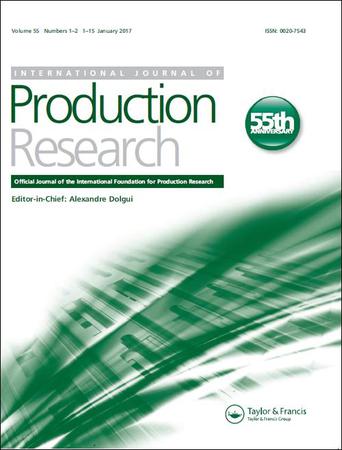Knowledge graph driven credit risk assessment for micro, small and medium-sized enterprises
IF 7
2区 工程技术
Q1 ENGINEERING, INDUSTRIAL
International Journal of Production Research
Pub Date : 2023-09-12
DOI:10.1080/00207543.2023.2257807
引用次数: 0
Abstract
Micro, Small, and Medium-sized Enterprises (MSMEs) are essential for the growth and development of the country's economy, as they create jobs, generate income, and foster production and innovation. In recent years, credit risk assessment (CRA) has been an essential process used by financial institutions to evaluate the creditworthiness of MSMEs and determine the likelihood of default. Traditionally, CRA has relied on credit scores and financial statements, but with the advent of machine learning (ML) algorithms, lenders have a new tool at their disposal. By and large, ML algorithms are designed to classify borrowers based on their credit history and transactional data while leveraging the entity relationship involved in credit transactions. This study introduces an innovative knowledge graph-driven credit risk assessment model (RGCN-RF) based on the Relational Graph Convolutional Network (RGCN) and Random Forest (RF) algorithm. RGCN is employed to identify topological structures and relationships, which is currently nascent in traditional credit risk assessment methods. RF categorises MSMEs based on the enterprise embedding vector generated from RGCN. Extensive experimentation is conducted to assess model performance utilising the Indian MSMEs database. The balanced accuracy of 92% obtained using the RGCN-RF model demonstrates a considerable advancement over prior techniques in identifying risk-free enterprises.知识图谱驱动的中小微企业信用风险评估
微型、小型和中型企业(MSMEs)对国家经济的增长和发展至关重要,因为它们创造就业机会、创造收入、促进生产和创新。近年来,信用风险评估(CRA)已成为金融机构评估中小微企业信誉和确定违约可能性的重要过程。传统上,CRA依赖于信用评分和财务报表,但随着机器学习(ML)算法的出现,贷款人有了一个新的工具。总的来说,ML算法旨在根据借款人的信用历史和交易数据对其进行分类,同时利用信贷交易中涉及的实体关系。本文提出了一种基于关系图卷积网络(RGCN)和随机森林(RF)算法的知识图驱动信用风险评估模型(RGCN-RF)。RGCN用于识别拓扑结构和拓扑关系,这在传统的信用风险评估方法中尚处于起步阶段。RF基于RGCN生成的企业嵌入向量对中小微企业进行分类。利用印度中小微企业数据库进行了广泛的实验,以评估模型的性能。使用RGCN-RF模型获得的92%的平衡精度表明,在识别无风险企业方面,与先前的技术相比,有了相当大的进步。
本文章由计算机程序翻译,如有差异,请以英文原文为准。
求助全文
约1分钟内获得全文
求助全文
来源期刊

International Journal of Production Research
管理科学-工程:工业
CiteScore
19.20
自引率
14.10%
发文量
318
审稿时长
6.3 months
期刊介绍:
The International Journal of Production Research (IJPR), published since 1961, is a well-established, highly successful and leading journal reporting manufacturing, production and operations management research.
IJPR is published 24 times a year and includes papers on innovation management, design of products, manufacturing processes, production and logistics systems. Production economics, the essential behaviour of production resources and systems as well as the complex decision problems that arise in design, management and control of production and logistics systems are considered.
IJPR is a journal for researchers and professors in mechanical engineering, industrial and systems engineering, operations research and management science, and business. It is also an informative reference for industrial managers looking to improve the efficiency and effectiveness of their production systems.
 求助内容:
求助内容: 应助结果提醒方式:
应助结果提醒方式:


